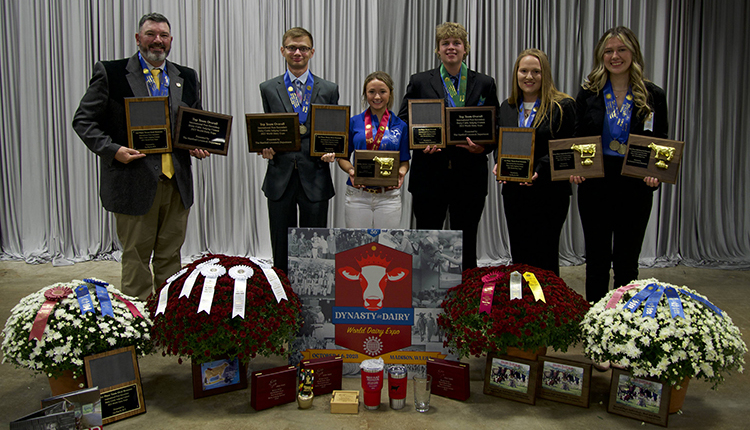Meeting in Arlington, Va., near the nation's capital, the 50th Annual Meeting of the National Mastitis Council was both festive and productive. There was plenty of fun and reminiscing sprinkled amid the science-based, roll-up-your sleeves agenda that has been a trademark of that unique organization. Many past presidents and other leaders of NMC attended the meeting, and several presentations underscored the great impact that NMC has had over the decades in preventing and treating mastitis and, generally, improving the quality of milk produced in North America and around the world.
Two current issues dominated hallway talk and strategies for several NMC committees, plus the board of directors. They were proposals to reduce the somatic cell count legal limit from 750,000 to 400,000 over a period of time and FDA's plan to initiate a new milk residue surveillance project.
An interesting paper presented by Duane Norman of USDA's Animal Improvement Programs Laboratory shed light on the impact of the proposed 400,000 SCC limit. It showed, among other things, that implementation of some proposals, such as that from the National Milk Producers Federation, actually would result in an SCC limit that would be more restrictive than that in the European Union.
Many in attendance at the NMC meeting were well familiar with the history of proposals to change the SCC limit here in the U.S. and the workings of the National Council on Interstate Milk Shipments which advises FDA on points in the Pasteurized Milk Ordinance, the regulatory document that governs the production and processing of milk. It was the belief of some at the meeting that, even though National Milk and, now, the U.S. Dairy Industry Advisory Committee, for example, are recommending implementation of the 400,000, it is not a sure thing that IMS will adopt such a proposal. The National Mastitis Council board of directors also will be submitting a proposal supporting the 400,000 SCC legal limit to IMS.
The 400,000 SCC legal limit and its implications will be the topic of a free Hoard's Dairyman webinar at noon Central Time on Monday, February 14. Pam Ruegg of the University of Wisconsin and past president of the National Mastitis Council will be the presenter. For information, go to www.hoards.com/webinars.
For now, FDA has put on hold its new, controversial milk residue testing program, pending some stakeholder input. FDA's plan was to sample milk from some 900 dairy operations that were among the 1,600 or so that had shipped an animal with a tissue drug residue over the past three years. One concern was that bob veal accounted for a large number of those residues and that how calves are handled has little to do with how milking herds are handled.
But, the bigger issue was what to do with the milk from a farm where an FDA sample was taken. It takes about seven days for test results to be confirmed. If the farm's milk does not go to the plant during the interim, someone has to endure that lost milk income. Some co-ops have advised members that they will cover the cost of milk from farms where an FDA sample was taken until results come back.
If the milk goes through normal channels during the waiting period, then the milk buyer faces the possibility of having to recall any product processed from that milk during that time should a residue be discovered.
The issue is attracting media attention. The Wednesday, January 26, issue of The New York Times covered the story.








